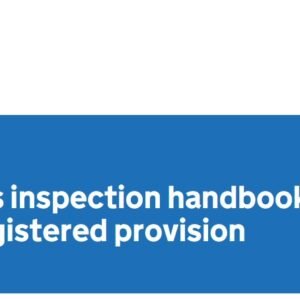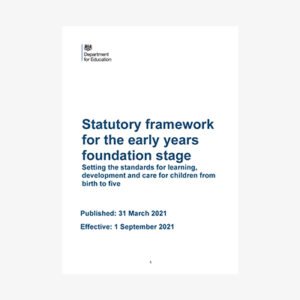The 3 I’s
£5.00
The 3 I’s in early years education refer to Intent, Implementation, and Impact. Intent focuses on planning what children will learn. Implementation refers to how learning experiences are delivered. Impact measures the outcomes of these learning experiences. The 3 I’s framework helps ensure that early years education is purposeful and effective. It supports practitioners in providing high-quality, responsive learning opportunities. By focusing on the 3 I’s, educators can create a well-rounded curriculum that meets children’s developmental needs. This approach aligns with the Early Years Foundation Stage (EYFS) and promotes positive outcomes for all children in their early years.
Understanding The 3 I’s in Early Years Education
The 3 I’s stand for Intent, Implementation, and Impact. These form the foundation of a strong early years curriculum.
Ofsted introduced The 3 I’s to help providers deliver high-quality education and care across all learning settings.
Each “I” supports planning, teaching, and reflection. Together, they guide professionals in creating meaningful learning experiences.
Intent: Planning with Purpose
Intent explains what you want children to learn. This includes knowledge, skills, and experiences tailored to their development stage.
Practitioners design learning that meets individual needs. They consider cultural background, interests, and previous experiences during planning.
Clear intent supports strong progress. It helps children gain the skills they need for their next stage of education.
Implementation: Bringing Plans to Life
Implementation focuses on how you teach and support learning. It includes daily routines, adult interactions, and the learning environment.
Practitioners deliver activities that match children’s needs and interests. They use a mix of child-led and adult-guided play.
Resources must support learning goals. Adults must ask open-ended questions and extend thinking through sensitive engagement.
Impact: Measuring What Children Learn
Impact means understanding the results of your teaching. You assess what children know, understand, and can do confidently.
Practitioners observe children and use assessments to guide next steps. They ensure learning remains active and appropriate.
Positive impact means children grow in confidence, independence, and knowledge. It prepares them well for future learning.
What to Look Out For
Check if planning links clearly to learning goals. Watch how adults interact and support play without dominating.
Look for confident, curious children who engage in learning. They should show progress across all areas of development.
Environments must remain inclusive, safe, and well-resourced. Every child must access high-quality learning opportunities every day.
Final Thoughts on The 3 I’s
The 3 I’s help early years providers plan, deliver, and assess with clarity. They ensure quality education in every setting.
When used correctly, The 3 I’s support strong outcomes for children and help prepare them for lifelong learning success.






 Statutory Framework For The EYFS (DfE)
Statutory Framework For The EYFS (DfE)